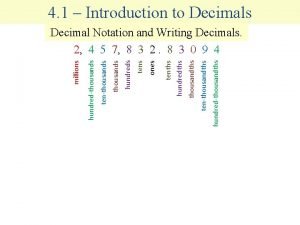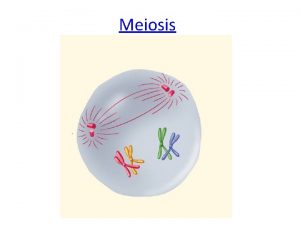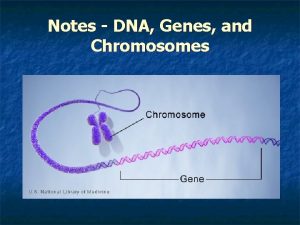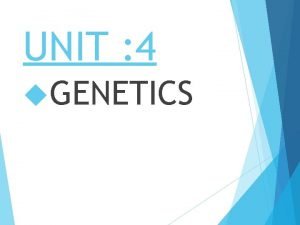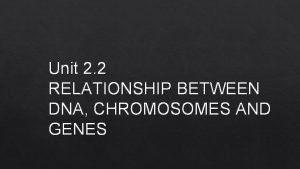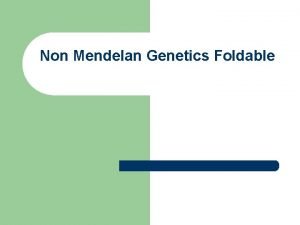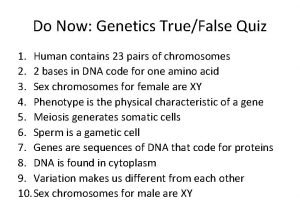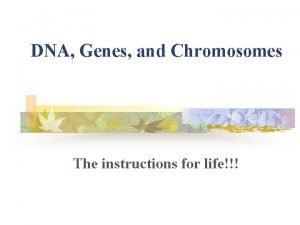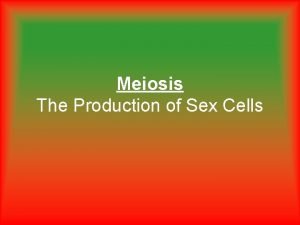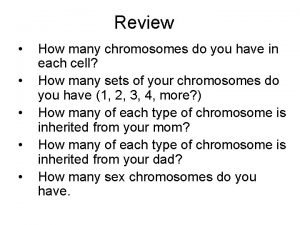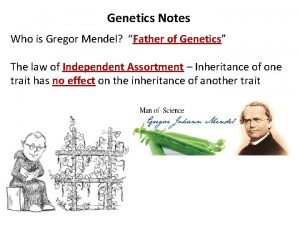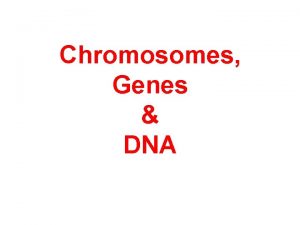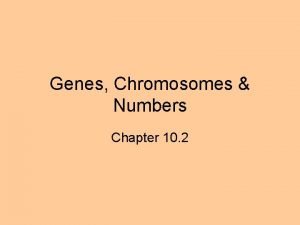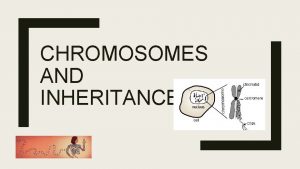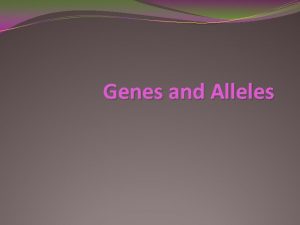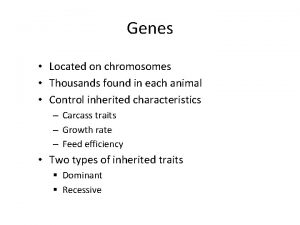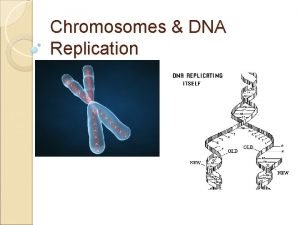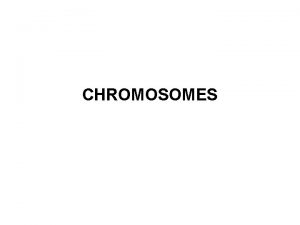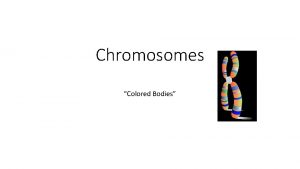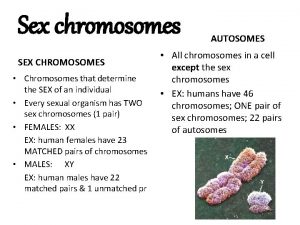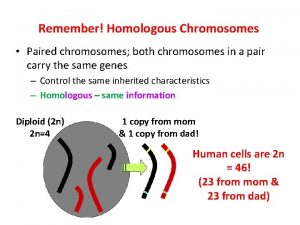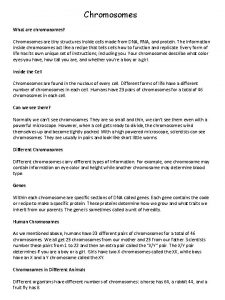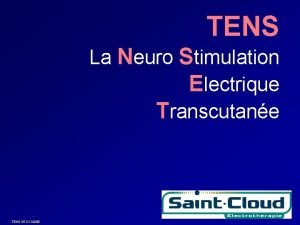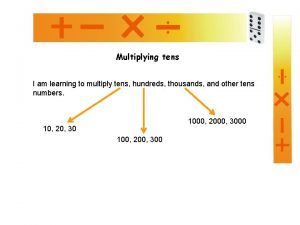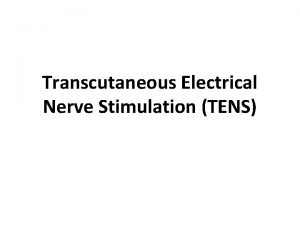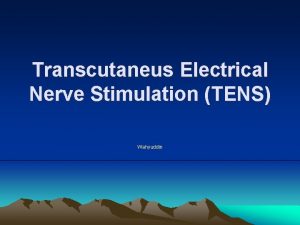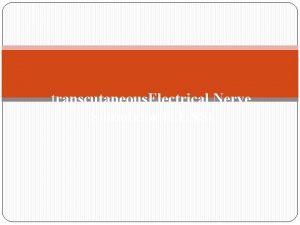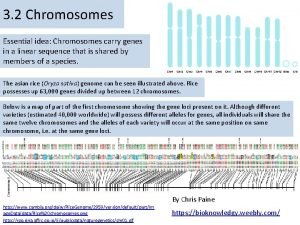Genes Chromosomes Organisms have tens of thousands of





















- Slides: 21

Genes & Chromosomes • Organisms have tens of thousands of genes that determine individual traits • Genes are lined up on chromosomes • A thousand or more genes are arranged on a 1 chromosome. • Alleles – alternative forms of a gene for each variation of a trait of an organism. • Trait – any characteristic that is inherited.

Diploid Cells • In body cells, chromosomes come in pairs (Mitosis) • A cell with two of each kind of chromosome is called a diploid cell. • It is called 2 n or diploid number of chromosomes. • Contains 2 chromosomes so there are 2 alleles for any given trait.

Haploid Cells • In Organisms that produce gametes (for sexual reproduction) or sex cells have cells that contain one of each kind of chromosome • A cell that contains one of each kind of chromosome is called a haploid cell. • It is called n or haploid number of chromosomes. • Contains 1 chromosome so there is only 1 allele for any given trait.

Homologous Chromosomes • Two chromosomes of each pair in a diploid cell help determine what the individual organism looks like. • Homologous Chromosomes – The paired chromosomes. • They are not always identical due to variations of alleles.

What does this person pass on to What sex will this person be? the next generation?

Why Meiosis? • When cells divide by Mitosis, the new cells have the exact same number and kind of chromosomes • If sex cells had the same number of chromosomes as a body cell, with each fertilization, the chromosome number would double! • Meiosis – A different type of cell division where gametes have half the number of chromosomes as the parents. • Therefore, when sex cells combine, they’ll create an offspring with the same number of chromosomes as the parents.

Meiosis: Reduction/Division Two divisions: Meiosis I & Meiosis II

Meiosis I & Crossing Over • Meiosis occurs in 2 stages: Meiosis I & II • Meiosis I – Begins with one diploid (2 n) cell • Meiosis I is very similar to Mitosis except for what happens to the chromosomes • Prophase I – each pair of homologous chromosomes comes together to form a tetrad. • Tetrad – 2 homologous chromosomes, each made of 2 sister chromatids (4 total) • These chromosomes exchange genetic material in a process called crossing over. • Can occur at any location on a chromosome and several locations at the same time.

Prophase I Unlike Like Mitosis: 1. Homologous Nuclear membrane disappears chromosomes group otherform 2. with Spindles 3. homologous Chromatin chromosomes to condenses into form a “tetrad” chromatids 2. A “chiasma” occurs at the point where the chromosomes cross over

Metaphase I 1. Homologous chromosomes line up at the metaphase plate. 2. Microtubules (spindles) attach to the kinetochore

Anaphase I 1. Homologous chromosomes separate. 2. Sister chromatids remain attached.

Telophase I • • Two daughter cells are formed with each one containing only one chromosome of the homologous pair. The daughter cells are now diploid.

Meiosis I Re-cap… • Metaphase I – The Centromere of each chromosome becomes attached to a spindle fiber – Spindle fibers pull the tetrads to the equator – Unlike mitosis, the chromosomes are together • Anaphase I – The homologous chromosomes separate to opposite ends of the cell – This ensures each new cell has 2 chromosomes • Telophase I – The cell divides with a new genetic combination unique to the parent cell

Meiosis II: Gamete formation Prophase II: • • DNA does not replicate. Prophase II is just like mitotic prophase.

Metaphase II: • All of the chromosomes line up at the metaphase plate.

Anaphase II: • • Centromeres divide Sister chromatids migrate separately to each pole.

Telophase II: • • Cell division is complete. Four haploid daughter cells are obtained.

Meiosis II - Recap • Meiosis II – ends with 4 haploid (n) cells • Meiosis II is identical to Mitosis • Prophase II – Spindle forms and attaches to the chromosomes • Metaphase II – Spindle attaches to the chromosomes and pulls to them to the equator • Anaphase II – Sister chromatids separate and are pulled to the poles • Telophase II – Spindle breaks down – Cytoplasm divides

Summary of Meiosis

Comparison Table of Mitosis and Meiosis Trait Mitosis Meiosis Chromosome Number Same (Diploid) Half (Haploid) Genetic Similarities Same Diverse Type of Cell Body Cell Sex Cells (eggs & sperm) Number of Divisions I (one) I & II (two) Type of Reproduction Asexual Sexual

 Tenths place
Tenths place Tens hundreds thousands decimals
Tens hundreds thousands decimals How many hundreds in 2000
How many hundreds in 2000 What are gametes
What are gametes 11-4 meiosis
11-4 meiosis Linked genes and unlinked genes
Linked genes and unlinked genes What are homeotic genes
What are homeotic genes Polygenic inheritance
Polygenic inheritance Dna, genes and chromosomes relationship
Dna, genes and chromosomes relationship Genes chromosome
Genes chromosome Genes located
Genes located What is the relationship between dna chromosomes and genes
What is the relationship between dna chromosomes and genes Chromosomes genes and basic genetics foldable answer key
Chromosomes genes and basic genetics foldable answer key Dna chromosomes genes diagram
Dna chromosomes genes diagram Dna, genes and chromosomes relationship
Dna, genes and chromosomes relationship Asexual and sexual reproduction venn diagram
Asexual and sexual reproduction venn diagram Why did the united states invade cuba in 1898?
Why did the united states invade cuba in 1898? Member of the same species
Member of the same species What are unicellular and multicellular organisms
What are unicellular and multicellular organisms How many chromosomes in human
How many chromosomes in human How many chromosome does a sperm cell have
How many chromosome does a sperm cell have What happens if you have 45 chromosomes
What happens if you have 45 chromosomes

